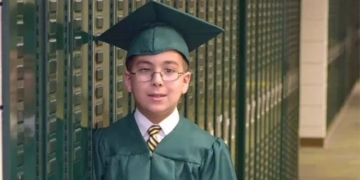Two guest editors from CNN have selected images they believe serve as urgent warnings to the world about the climate crisis, while also issuing a call to action.
Water cascading down from an ice wall, with streaks of gray cloud above, creates a stunning visual.
However, the story behind it is even more devastating, as Earth’s glaciers are melting at unprecedented rates due to human-induced climate change, according to CNN.
Canadian photographer Paul Nicklen recalls capturing this image in August 2014, during an unusually warm spell in Svalbard, Norway, where temperatures hovered above 21 degrees Celsius. As he rounded a corner on the glacier of Nordaustlandet Island, he witnessed over a dozen waterfalls pouring down.
“It was the most picturesque, beautiful scene I had ever witnessed, but it was also haunting and terrifying,” he reflected. That photograph became emblematic of climate change reality and turned into Nicklen’s best-selling piece of art.
As guest editors for CNN’s “The Call of the Earth” series, Nicklen and his wife, Cristina Mittermeier, have chosen ten images they believe have warned the world about the climate crisis.
Haunting Images
Nicklen, Mittermeier, and Andy Mann co-founded the nonprofit organization SeaLegacy, which uses film and photography to raise awareness about climate issues and help protect the planet.
“Photography is one of the most effective and powerful tools we have to tell complex stories, like the story of climate change,” Mittermeier said.
She witnessed that power through one of her own photographs taken in August 2017, depicting a starving polar bear.
After being published in National Geographic, the accompanying image and video quickly went viral worldwide, sparking a global discussion on climate change and evoking mixed reactions.
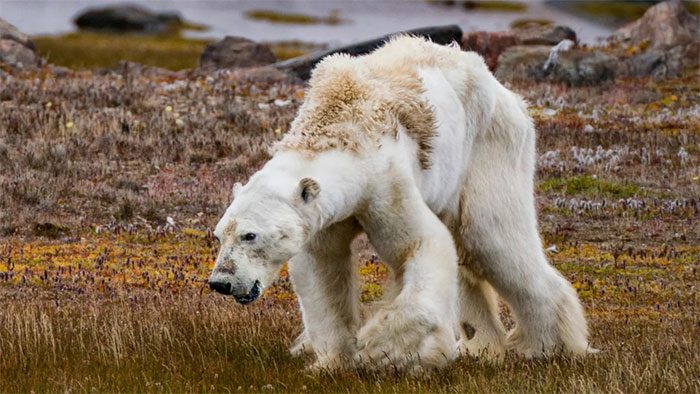
A starving polar bear staggering in search of food. (Photo: Cristina Mittermeier).
However, CNN asserts that it cannot be denied that the image shook the world. “People still remember it and have strong reactions when they see it,” Mittermeier noted.
Meanwhile, Nicklen compares photographing climate change to capturing conflict. “We are on the front lines of a war against our own planet,” he stated.
In recent decades, as climate disasters have become more frequent and severe, images have more clearly illustrated the urgency of the situation.
Six dead giraffes, their bodies emaciated from lack of food and water, captured by photographer Ed Ram, reveal the horror of the ongoing drought in Kenya.
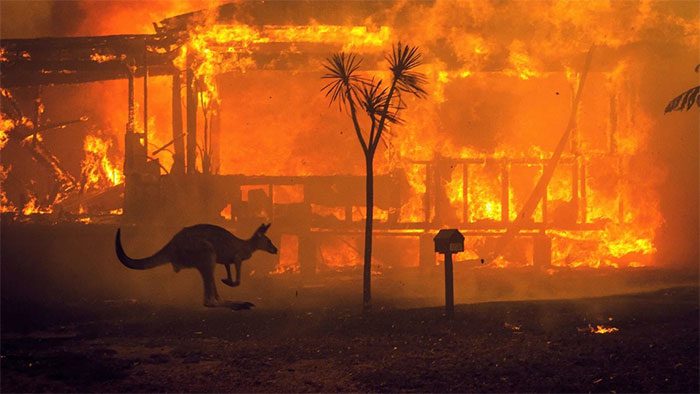
A kangaroo jumping over a house on fire in Lake Conjola, Australia, in December 2019. (Photo: New York Times).
Images of wildfires demonstrate the scale of devastation, with homes ablaze and wildlife fleeing in desperation.
“They show that climate change is not just happening somewhere else; it is happening everywhere,” Mittermeier remarked.
“The Slow-Moving Tsunami”
Sometimes, climate change can occur in a slow and monotonous manner. Sea levels rise by a few millimeters each year—a change that is nearly invisible even though it is happening faster than ever.
However, such changes gradually accumulate, and if documented visually over years or decades, the impacts become evident.
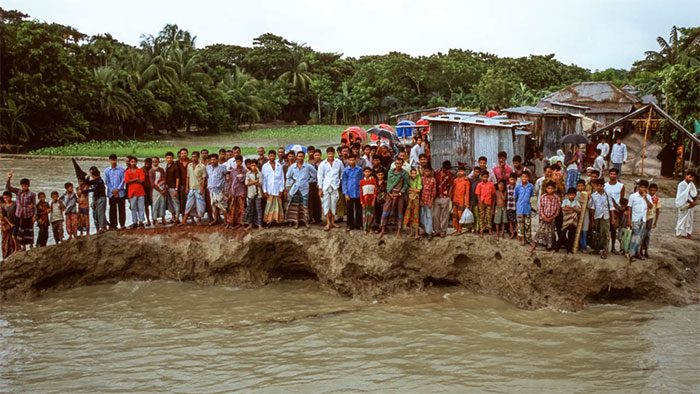
Villagers stand on the remnants of a road on Bhola Island, Bangladesh, in 2005. (Photo: Gary Braasch/naturepl.com).
“It’s like photographing a slow-moving tsunami. It’s hard to see in the present moment, but when two images are placed side by side, it’s hard not to see the impact of that climate crisis,” Mittermeier explained.
She and her husband also selected images where humans and nature “collide.” With the Arctic warming nearly four times faster than the rest of the globe, polar bears are losing their habitats.
The Intergovernmental Panel on Climate Change (IPCC) warns that countries must drastically cut greenhouse gas emissions. If the Earth’s temperature rises beyond 1.5 degrees Celsius, humanity will face severe consequences from climate change.
The photograph “The Polar Bear’s Home” by photographer Dmitry Kokh shows polar bears wandering through an abandoned settlement on Kolyuchin Island.
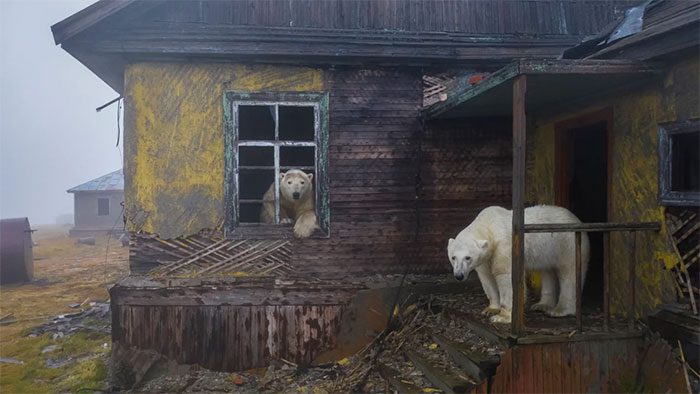
A polar bear moving towards an abandoned weather station in Kolyuchin, Russia. (Photo: Dmitry Kokh).
While the homes have long been abandoned, Mittermeier believes this points to the growing problem for polar bears. With no ice left to hunt, they encroach on human spaces and encounter local residents, leading to tragic outcomes for both sides.
Hope
The impacts of climate change will—and already have—affected both animals and humans. In addition, the photo series “The Day May Break” by photographer Nick Brandt illustrates this by showing how people and animals are affected by environmental destruction.
The images, taken in wildlife reserves across the globe, depict individuals forced to relocate due to climate change events such as droughts or floods. Additionally, animals fall victim to habitat destruction or wildlife trafficking.
Capturing both in the same frame shows how deeply our fates are intertwined.
Among the images of devastation and displacement, CNN notes that there are also images expressing hope. In Brandt’s work, he highlights that the subjects of the photographs, both humans and animals, have survived.
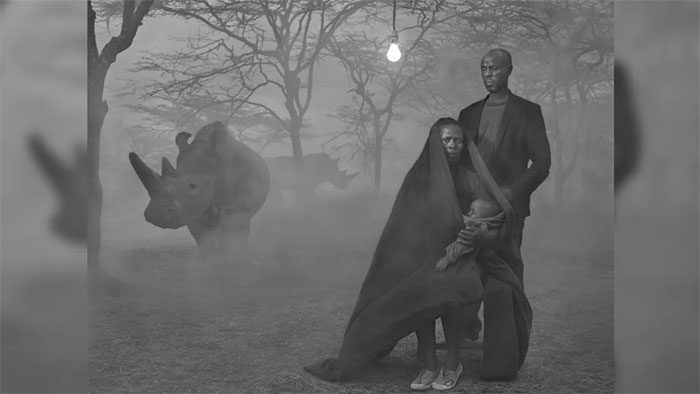
Alice, Stanley, and their child were displaced when floods destroyed their home in Kenya in 2017. (Photo: Nick Brandt/Fahey/Klein Gallery).
For Mittermeier and Nicklen, as well as SeaLegacy as a whole, conveying a message of hope is crucial to their larger mission.
“Martin Luther King did not start his famous speech by reminding us that we are living in a nightmare. He told us what the dream is. You must point out what we are yearning for and indicate where hope lies,” Mittermeier said.
For Mittermeier, the photograph of a sea lion surfacing in the Galapagos—one of the largest marine reserves in the world—illustrates how ocean life can thrive if properly protected.
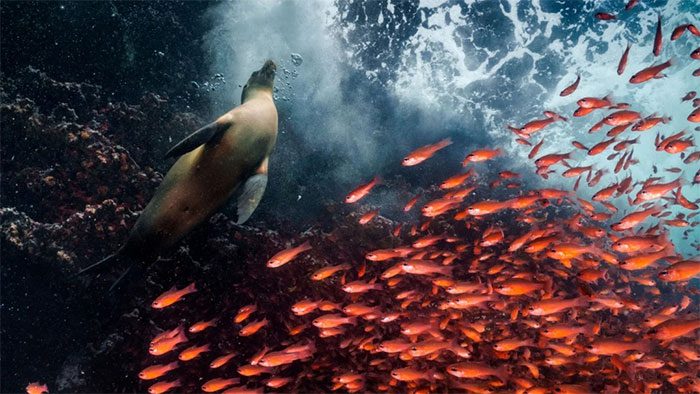
A school of fish moves aside for a sea lion in Galapagos. (Photo: Cristina Mittermeier).
Additionally, for Nicklen, the photograph of a humpback whale represents one of humanity’s greatest allies in the process of carbon sequestration. The whale’s body is not only a massive carbon reservoir, but its feces also help phytoplankton absorb carbon dioxide from the atmosphere.
By showcasing the planet’s beauty, the couple believes they can inspire people to fight against climate change.
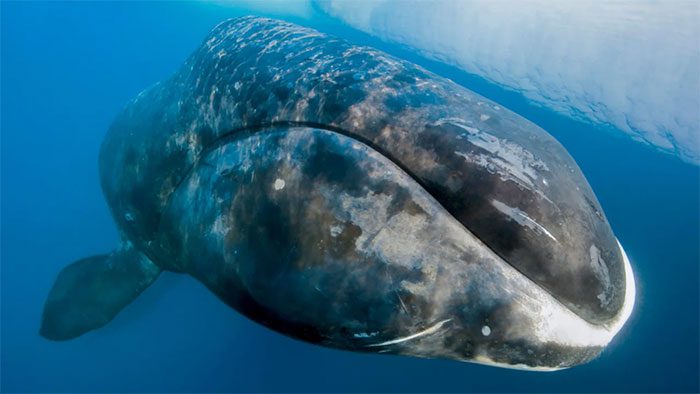
A humpback whale. (Photo: Paul Nicklen).
“We are trying to climb the highest mountain and shout from the summit that this planet is dying and we are in danger,” Nicklen said.
“However, the only emotion greater than fear is hope. And the only way you can feel hope is through action,” Mittermeier added.


















































